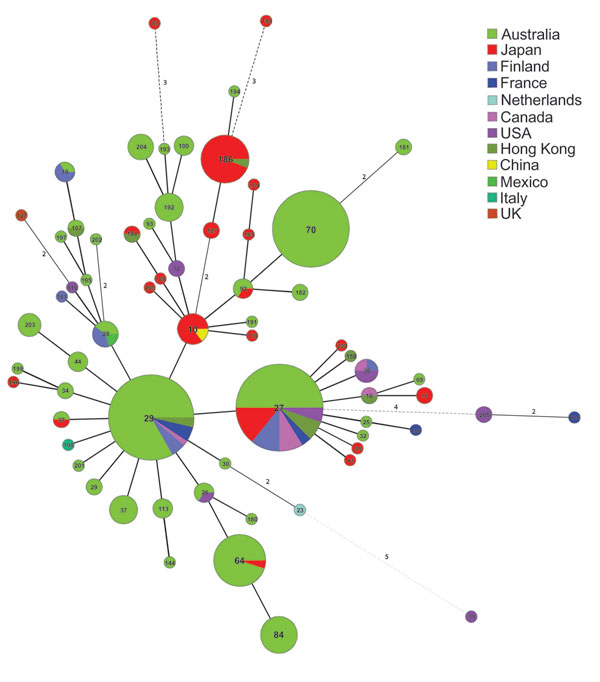Volume 16, Number 2—February 2010
Dispatch
Bordetella pertussis Clones Identified by Multilocus Variable-Number Tandem-Repeat Analysis
Figure 2

Figure 2. Minimum spanning tree (MST) of multilocus variable-number tandem-repeat analysis (MLVA types for global Bordetella pertussis isolates. The MST produced in Bionumerics (Applied Maths, Kortrijk, Belgium) used categorical coefficient and the eBURST priority rule of the highest number of single-locus changes for the clustering. Each circle represents an MLVA type with the type number in the circle. Thick lines, types differing by a single MLVA locus; thin lines, double-locus variants; dotted lines, 2 types differing by >2 MLVA loci. The size of the circle reflects the number of isolates with a given MLVA type. The color codes for country of origin are shown, and pie charts within a circle are used to indicate the proportion of isolates.